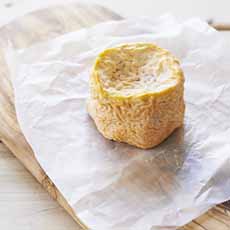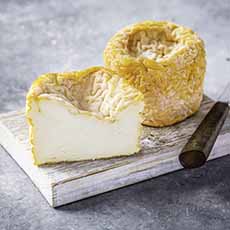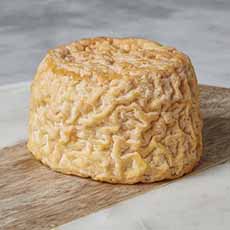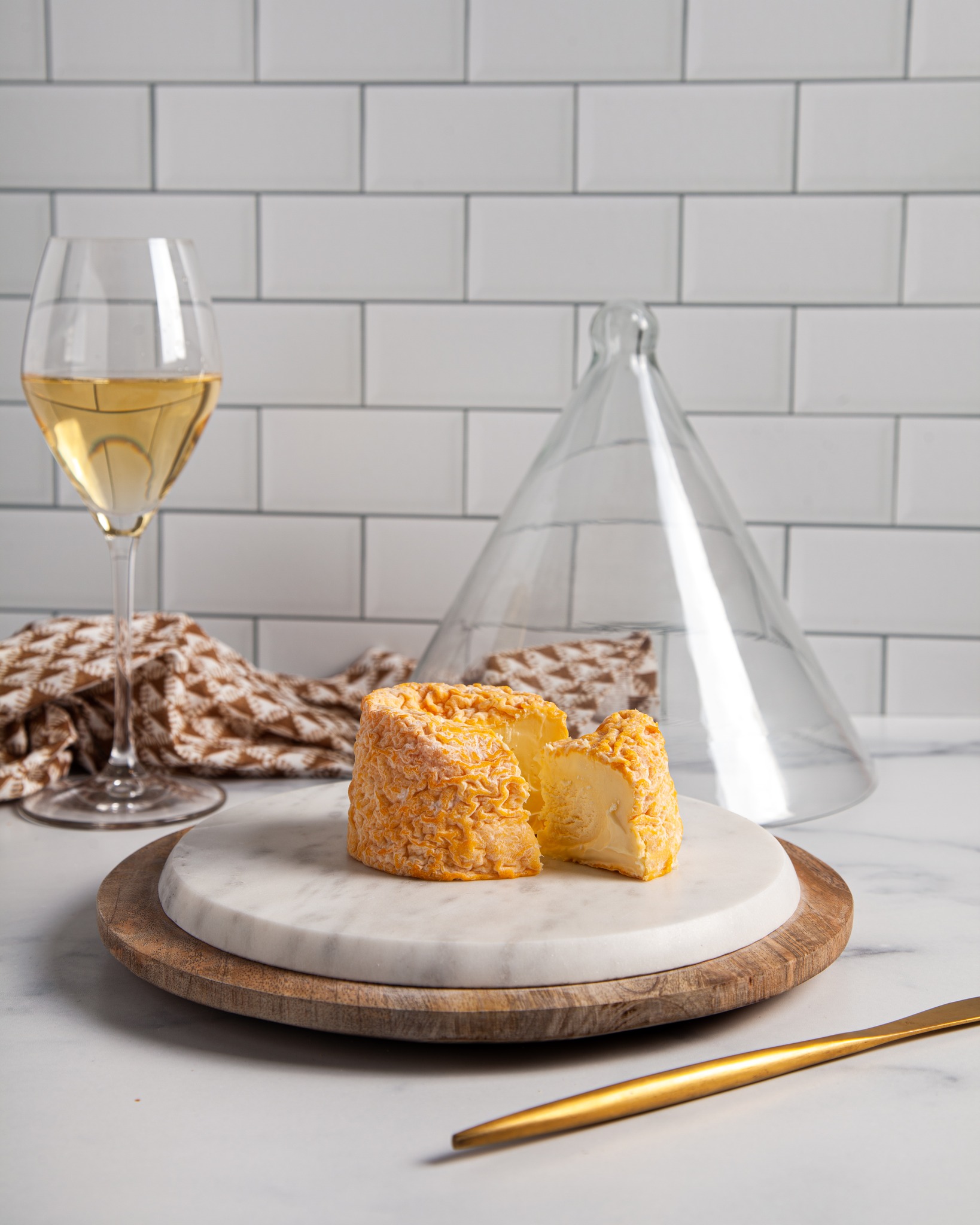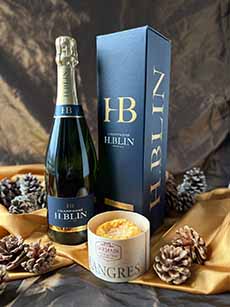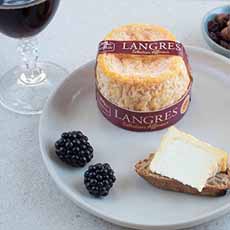Langres & Other Cheeses To Serve With Champagne On New Year’s Eve
|
Whether you’re hosting a fête or staying at home with loved ones to avoid the crush of revelers, it’s likely that corks will be popped and bubbly poured. We always like to offer a special cheese to accompany Champagne or other sparkling wines. Double- and triple-creme cheeses are sumptuous with Champagne. Brie and Camembert are typically* double-crèmes (here’s the difference between Brie and Camembert). Triple-crème cheeses are quite a bit richer and creamier, and a voluptuous pairing with Champagne or another sparkler. Look for: Langres (pronounced LAHN-gruh) is a cheese from the former French region of Champagne-Ardenne (it merged in 2016 with the neighboring regions of Alsace and Lorraine to form the new region Grand Est in the northeast of the country, bordering Belgium). Langres is a cow’s milk cheese, cylindrical in shape, weighing about 180g (6.3 ounces). It is a full-bodied cheese with a pronounced aroma, although it is a less pungent cheese than Époisses de Bourgogne (its neighbor and the local competition). Langres is from the same cheese family as Époisses and Muenster.) The rind of the cheese is sticky and shiny, showing off its magnificent orange color, the result of many washings with brine or Marc de Bourgogne during the maturing period, and rubbing with annatto, a natural orange-red dye derived from a tropical tree. The “brain”-like ridges in the rind are created by Geotrichum candidum, a fungus applied to set cheese after the milk has been coagulated and the whey has been drained. But we’re getting ahead of ourselves! This triple crème cheese is produced with whole cow’s milk enriched with cream, which provides the triple crème creaminess. After coagulation with rennet enzymes, the cheese curds are poured into cylindrical molds. They are then placed in humid cellars to mature. Ripening typically takes 5 to 6 weeks. The result: Because the cheese is not turned, it forms a concave well on the top (photos #1, #2, #7), which is called the fontaine or cuvette in French. This depression is intentional; you can pour Champagne or Marc de Champagne in it to further flavor the cheese. The rind is delicious and should definitely be eaten. The paste is soft, creamy in color and slightly crumbly; it has a bloomy white Penicillium candidum rind. The flavor of the cheese is distinct without being aggressive. Some have described the finish as soaked in honey and truffles. In addition to Champagne, Langres goes well with red Burgundy and Marc de Bourgogne. For connoissers, serve a flight of all three. For a white wine, choose a substantial dry white wine, such as a Pouligny-Montrachet. Enjoy Langres alone with the wine, on a cheese board, or with a salad. An idea from Murray’s Cheese: Turn it into hors d’oeuvres on rye crackers with thin slices of cornichons and a small dollop of Dijon mustard. Langres has been produced in the Champagne region since at least the 13th century, when it is mentioned in a song composed by the Dominican prior of the city of Langres. A more formal written reference appears in 1874 in a book on cheese written by A. F. Pauriau, “La laiterie, art de traiter le beurre, de fabriquer les beurres et les principaux fromages français et étrangers” (“The dairy farm, the art of handling and making butter and manufacturing the main French and foreign cheeses”) [source: Official Journal Of The European Union, C247/11, 25.8.2011). At that time, the cheese was produced on local farms from cow’s milk and sold mainly in the market town of Langres, where 14 affineurs (establishments that age cheese) bought the young white cheese and matured it. It appears that cheeses of different sizes existed back then: small cheeses for consumption in the relatively short term, and larger cheeses that were better adapted to long-term storage and sale to further destinations. Little by little, wholesalers established themselves to deliver a broader commercial reach. In the 19th century, the cheeses made their way to Paris, Châlons, Bar-le-Duc, Nancy, the departments of Corrèze and Allier, and even to Geneva, spreading the reputation of the cheese. World War I (1914-1918) marked the beginning of a decline in artisan farm production of Langres, which continued until the end of the 1940s. To meet demand, farm-made Langres was gradually superseded by factory production in facilities that had arisen since the beginning of the 20th century. But in 1950, some artisanal cheese-makers began to make Langres again. In 1981 the consortium, Syndicat Interprofessionnel du Fromage de Langres was established. In 1986 it began working to obtain a registered designation of origin for Langres, to cement the domestic and international reputation of the cheese. The cheese was finally awarded an appellation d’origine contrôlée (A.O.C.) in 1991. It has held a P.D.O. (Appellation d’Origine Protégée, Protected Designation of Origin) since 2009. In the European Union’s protected designation of origin system, P.D.O. has replaced France’s A.O.C. designations for all products except wine. While all dairy cheeses are made from milk, with a triple crème heavy cream is added to the milk to create the richest, most buttery cheese. In order to qualify as a triple créme, the cheeses must have more than 72% butterfat content, which provides the smooth texture. Triple crèmes are a type of bloomy rind cheese and also are aged about two weeks. As with other cheeses that have short aging periods, the flavors are mild and the aromas are subtle. Examples include Brillat-Savarin, Explorateur, and St. André. This group of cheeses pairs well with Champagne and other sparkling wines. |
|
|
|
CHECK OUT WHAT’S HAPPENING ON OUR HOME PAGE, THENIBBLE.COM.
|
||
